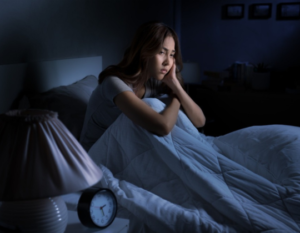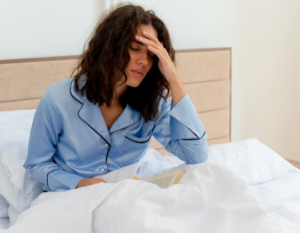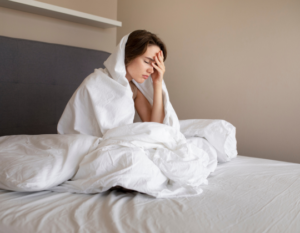 The most frequent disorders are those related to sleep. Sleeping disorders can cause symptoms such as daytime exhaustion and interfere with your ability to get sufficient sleep. Everyone has sleep issues at any time. Lack of sleep affects judgment, makes people angry, makes people perform insufficiently, takes longer to react, and increases the risk of being in an automobile or industrial accident. Inadequate sleep can also be harmful to health because it increases the risk of obesity, diabetes, and heart disease. You can overcome it with the assistance of a qualified and experienced medical professional who can provide you the best sleeping disorder treatment if you receive the appropriate drugs and care.
The most frequent disorders are those related to sleep. Sleeping disorders can cause symptoms such as daytime exhaustion and interfere with your ability to get sufficient sleep. Everyone has sleep issues at any time. Lack of sleep affects judgment, makes people angry, makes people perform insufficiently, takes longer to react, and increases the risk of being in an automobile or industrial accident. Inadequate sleep can also be harmful to health because it increases the risk of obesity, diabetes, and heart disease. You can overcome it with the assistance of a qualified and experienced medical professional who can provide you the best sleeping disorder treatment if you receive the appropriate drugs and care.
To manage these disorders, a range of therapeutic options are available, including behavioral therapies, medications, advanced medical procedures, and lifestyle modifications. There are a lot of clinics providing the best sleeping disorder treatment near you. The best sleeping disorder treatment in Arizona is provided by RD Integrated Health. We will examine various sleeping disorder treatments for common sleep problems in detail, with a focus on an integrated strategy that addresses the root causes and the symptoms.
Most common sleeping disorders and treatments
1. Insomnia
The inability to get asleep, stay asleep, or have deep sleep are the symptoms of insomnia. It can be severe or constant, and stress, anxiety, depressive disorders, or other medical problems are frequently linked to it. Insomnia can also result from inadequate sleep, unstable sleep patterns, and some drugs. Medication and cognitive-behavioral therapy are popular methods for treating insomnia.
- Medication: Medical professionals may occasionally recommend medication to treat insomnia. Benzodiazepines, non-benzodiazepine hypnotics, and melatonin receptors are a few examples. Because of the possibility of dependence and adverse consequences, these drugs are usually only advised for brief periods.
- Lifestyle Modifications: Developing healthy sleeping practices is essential for treating insomnia. This requires maintaining a regular bedtime routine, setting up a cozy sleeping space, minimizing screen time before bed, and avoiding drugs like nicotine and caffeine just before bed.
2. Narcolepsy
A neurological condition called narcolepsy is typified by extreme drowsiness throughout the day, abrupt loss of muscle mass, paralysis during sleep, and intense visions when you fall or wake up. Although the precise cause is uncertain, a chemical in the brain called hypocretin, which controls alertness, is thought to be lacking. Scheduled naps, lifestyle modifications, and medication are frequently used to treat narcolepsy symptoms.
- Medications containing stimulants: Modafinil and armodafinil are frequently recommended to treat narcolepsy-related excessive daytime sleepiness. These drugs increase alertness and encourage wakefulness.
- Scheduled Naps: People with narcolepsy may find that adding brief, planned naps into their daily routine helps better control their daytime tiredness. Incorporating strategic napping into a comprehensive treatment strategy is common.
- Lifestyle alterations: A proper sleep cycle, a regular sleep schedule, and the creation of a comfortable atmosphere can all support pharmaceutical treatments for narcolepsy.

3. Parasomnias
During sleep, abnormal actions known as parasomnias take place. Sleepwalking, nightmares, and eating disorders associated with sleep are a few examples. These conditions, which can be brought on by stress, lack of sleep, or specific drugs, frequently involve an interruption in the regular sleep cycle. To prevent injuries during episodes, safety precautions and addressing the root cause may be a part of the treatment plan.
- Treatment of Basic Issues: It’s critical to address the root causes like anxiety, stress, or lack of sleep that contribute to parasomnias. Enhancing general sleeping habits, managing stress, and implementing psychiatric therapies may all be helpful.
- Safety precautions: Putting safety precautions in place during sleep can assist in avoiding accidents during parasomnia episodes. This might include placing in cushioning, clearing out obstacles, or even locking doors and windows.
4. Hypersomnia
Excessive daytime sleepiness during the day, also known as hypersomnia, makes people find it difficult to stay awake. Hypersomnia can be caused by sleep disorders such as sleep apnea and certain drugs. In addition to treating the root cause, the treatment may involve taking medicine that promotes alertness.
- Stimulant drugs: People with hypersomnia may be offered medications with stimulants, such as opiates or modafinil, to assist in managing their excessive daytime sleepiness.
- Planned Naps: To prevent daytime tiredness, carefully scheduled naps can be introduced into a daily routine.
5. Circadian rhythm disorders
Disorders of the circadian rhythm refer to disturbances in the natural sleep-wake cycle of the body. Examples include jet lag, delayed sleep cycle syndrome, and work-related sleep disturbance. A person’s exposure to artificial light, irregular work patterns, and frequent time zone changes can all lead to circadian rhythm issues. Sleep schedule adjustments, melatonin supplements, and light therapy are examples of management techniques.
- Light treatment: Exposure to strong artificial light is used in light therapy to help control circadian rhythm disorder. Those who suffer from work-related sleep problems or late sleep phase disorder will find this helpful. Resetting the body’s internal clock and enhancing sleep-wake cycles are possible using light treatment.
- Supplements containing melatonin: Melatonin is a hormone that controls the cycles of sleep and wakefulness. The circadian rhythm can be shifted with the use of supplemental melatonin, which makes it a useful treatment for jet lag or a work-related sleep problem.
- Continuous Schedule Changes: People can adjust to different time zones or schedules for work more easily by gradually changing their sleep habits by falling asleep and rising a little earlier each day.
6. Restless legs syndrome
A neurological condition known as restless legs syndrome is typified by a constant desire to move the legs and is typically accompanied by uncomfortable feelings. The majority of the time, symptoms get worse when idle and can disrupt sleep. Medications, iron supplements, and lifestyle modifications are frequently used to treat restless legs syndrome.
- Iron Tablets: Taking iron pills may be advised if restless legs syndrome is linked to an iron shortage. This is especially important for people whose iron levels are low.
- Lifestyle Modifications: Reducing caffeine and nicotine use, getting regular exercise, and sticking to a regular sleep pattern can help to manage the symptoms.

7. Sleep apnea
Breathing frequently stops and begins while a person is asleep, a condition known as sleep apnea. Obstructive sleep apnea and central sleep apnea are the two primary forms. Central sleep apnea is associated with the brain’s inability to instruct the muscles in the neck to breathe, whereas obstructive sleep apnea is caused by excessive throat muscle relaxation. During sleep, loud snores, choking, or panting are typical symptoms. Surgery, ongoing airway pressure therapy, and lifestyle modifications are possible forms of treatment.
- Continuous positive airway pressure: For obstructive sleep apnea, this is a commonly used treatment. The procedure entails donning a face mask over the nose or the mouth while you sleep, which is attached to a device that continuously blows air into your airway to keep it open.
- Lifestyle Changes: Moderate cases of sleep apnea can be managed by losing weight, starting therapy, and preventing alcohol and tranquilizers before bed. Losing weight may significantly decrease the seriousness of sleep apnea in obese individuals.
- Surgery: To treat anatomical defects causing sleep apnea, surgical procedures may be advised in certain situations.
8. Sleep-related movement disorders
These conditions, which include restless legs syndrome and periodic limb movement disorder, involve strange actions or movements while you sleep. These motions may cause sleep disturbances and tiredness during the day. Treating sleep-related movement disorders often involves medication, lifestyle modifications, and dealing with fundamental factors.
- Medication: To lessen the amount and severity of movements linked to sleep-related movement disorders, doctors frequently give dopamine drugs such as pramipexole.
Behavioral Treatments: You can manage the symptoms of movement problems associated with sleep by practicing methods of relaxation, stretches, and creating a bedtime routine.
